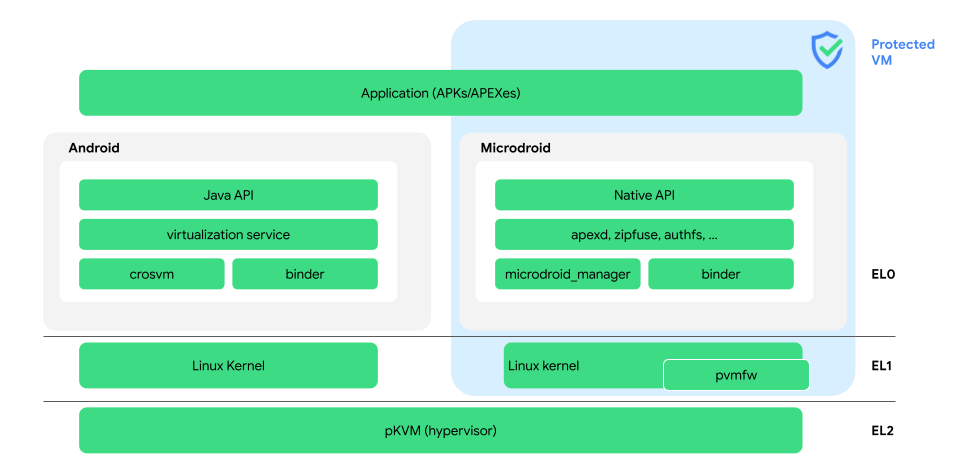

Maybe because many streaming services have locked their 4k content behind some specific apps and platforms and offer lower resolutions on general desktop PCs.


Maybe because many streaming services have locked their 4k content behind some specific apps and platforms and offer lower resolutions on general desktop PCs.


Generally, we (sadly) see smart monitors come up like smart TVs did ten years ago.
Some noteable features include streaming apps (netflix…) and wireless screen mirroring from phones.


This graphic shows that the platform is designed with full virtualization in mind. You can see that the VM on the right has its own kernel (unlike for example docker containers).

Edit: image source


I don’t think so. I think they are trying to make android more suitable for “desktop” usage, similar to chrome os.
By providing a gui for larger screens (Android 15) and virtualization (Android 16) they are significantly expanding what android can do.


Sounds a bit like the linux container in chromebooks. Looks like Google is planning to merge chrome os and android in future


Really? At least 90% of packets I get are deposited without signature.


I think it is necessary to make a difference between delivering cheap stuff and a new iPhone or laptop.
It would look much worse if microsoft had full control over email.
I don’t think the concept of enshittification really applies to a network like the fediverse.
Enshittification happens, when companies can deliberately make their product worse for profit.
But with the fediverse, there is no single party that can just add more ads and tracking to their service (except maybe threads by meta, but this is a different story).
If the fediverse fails, then probably because it fails to attract high quality content and only gets spam and bots instead.
They should have split it so both of them can enjoy at least 50% of it.


ssh with an easy to guess root password?


It probably has a large database of exploits it can use. The article claims 20k, but this seems to high for me.


Yes, but they replace common tools like top or lsof with manipulated versions. This might at least trick less experienced sysadmins.
Edit: Some found out about the vulnerability by ressource alerts. Probably very easy in a virtualized environment. The malware can’t fool the hypervisor ;)
I agree, but I understood this question in the context of a homelab.
And for me, a homelab is not the right place for a public website, for the reasons I mentioned.


No, with these reasons:
I have a VPS for these tasks, and I host a few sites for friends amd family.


All models are equipped with 16GB of RAM, and two additional storage variants are available that cost 21,999 yuan (about $3,089) for 512GB and 23,999 yuan (about $3,370) for 1TB.
They are learning from Apple about the memory price. $300 for 512 gb additional memory storage is insane.


A little low specs for a tablet with “pro” in its name, but at only €400 they needed to save money somewhere


Oh, they found one scenario that looks good for them. Never trust those early benchmarks until they can be verified independently.
It is good that they are easier to read, because they are about as long as the first book of The lord of the rings.
For a start, try hosting something in your own home. A raspberry or an older PC or laptop should be enough.
My first projects were a print server (so I can print via wifi) and a file server. Try to find something that is useful for you.
Only start hosting on the internet when you’ve learned the basics and have more experience.